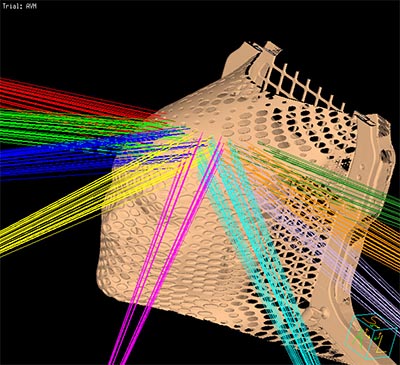Stereotactic Radiosurgery (SRS)
 Stereotactic radiosurgery (SRS) utilizes highly-precise radiation treatment, which
is delivered in 1-5 total sessions (high dose per fraction). It is highly effective
in controlling metastatic tumors in the brain and spine.
Stereotactic radiosurgery (SRS) utilizes highly-precise radiation treatment, which
is delivered in 1-5 total sessions (high dose per fraction). It is highly effective
in controlling metastatic tumors in the brain and spine.
SRS for brain metastases minimizes the radiation dose received by the normal brain tissue, and is therefore usually well-tolerated with very few side effects. Similarly, SRS to spine tumors minimizes the radiation dose received by adjacent normal organs, such as the lungs, heart and kidneys.
- SRS provides an excellent alternative to surgical resection for metastatic lesions within the brain. By ablating metastatic tumors using highly-targeted radiation beams, it is essentially “surgery without a scalpel.”
- SRS can be used to help prevent local progression of metastatic disease in the spine, which can have serious consequences (spinal cord compression).
Cranial radiosurgery at UTMC is performed without an invasive metal head frame. Our “frameless approach” allows the procedure to be completely non-invasive, painless and convenient.
Because it is delivered quickly, SRS can be used to control metastatic lesions in the brain/spine without delay or interruption of systemic therapy.

